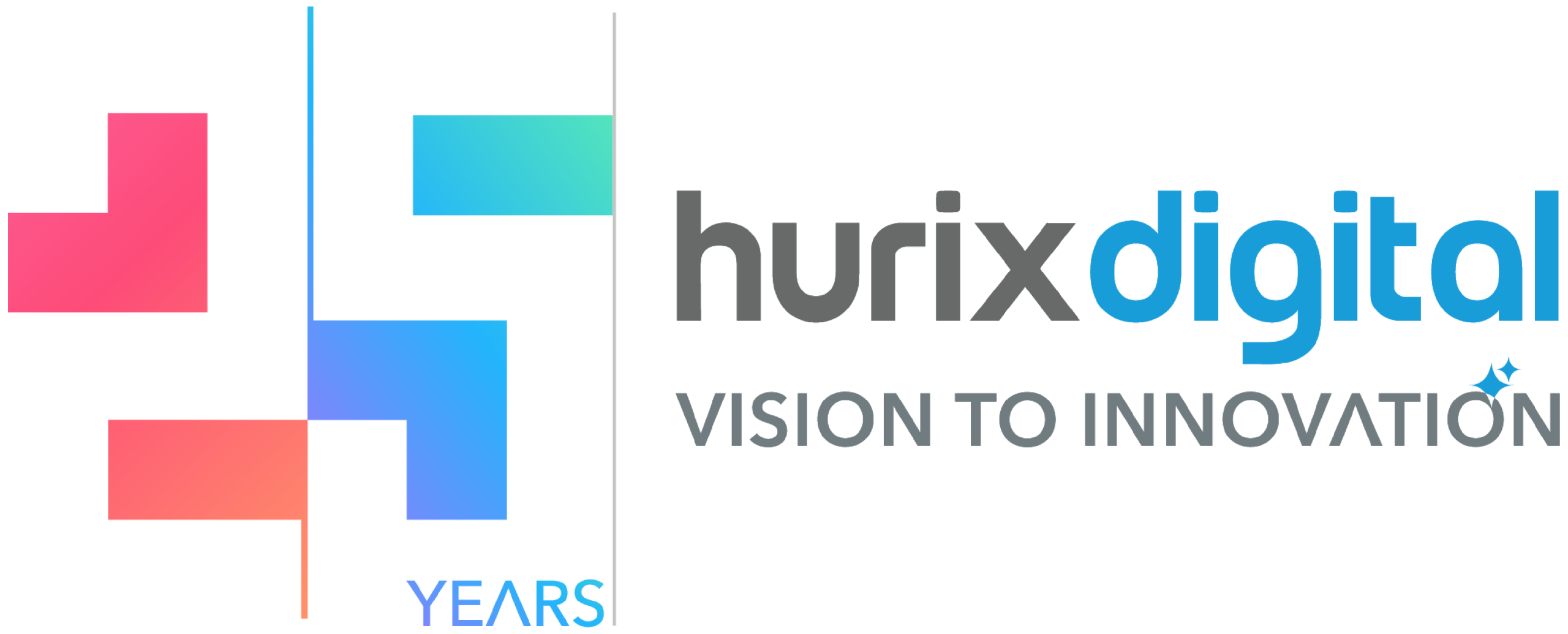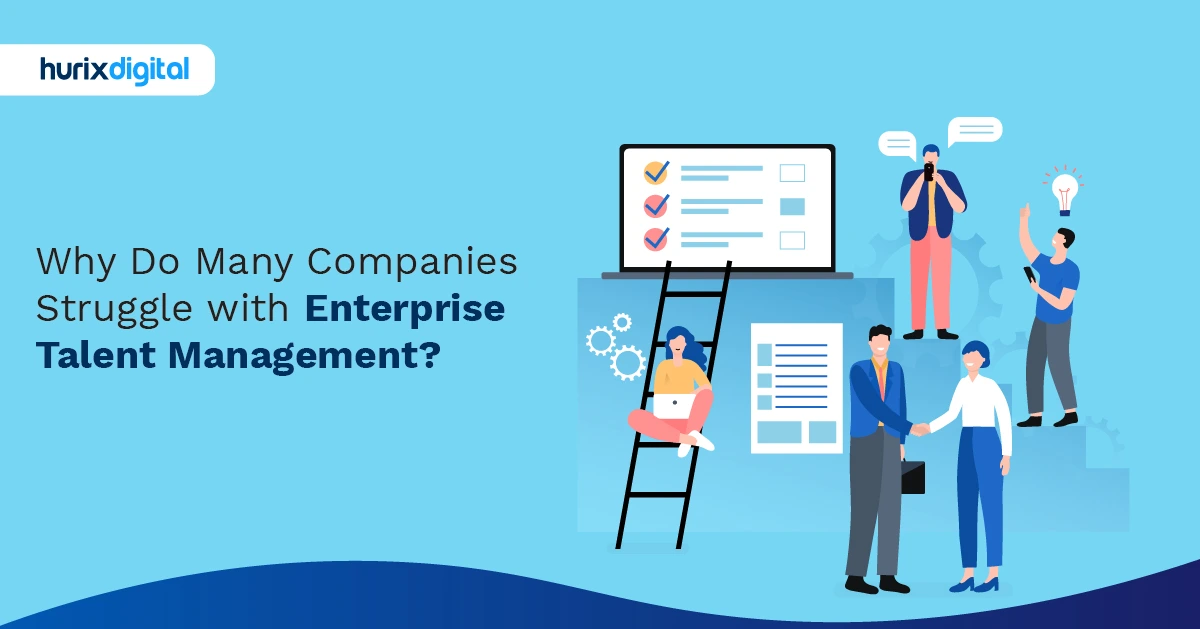
How Can Companies Boost Talent Retention and Engagement?
The phrase “mastering enterprise talent services” is often thrown around with a certain gravitas, isn’t it? Yet, for anyone truly wrestling with the sheer scale and bewildering pace of talent within a large organization, it’s far less about achieving “mastery” and far more about a perpetual, slightly frantic, game of strategic whack-a-mole. One moment, a glaring skills gap demands immediate attention; the next, it’s the perplexing ROI of that shiny new HR platform, or the silent exodus of your most valuable people.
A professional with a lot of experience recently said that running talent initiatives can feel like trying to lead a symphony where half the musicians don’t know how to play their instruments and the other half are playing in a different key. That feeling, which is a mix of challenge and a little bit of the absurd, is often right on the money. A constantly changing world of business talent requires more than just answers; it requires the right questions as well.
So, what are these urgent questions keeping leaders awake? We’re not talking about platitudes or quick fixes, but deep dives into the thorny issues that genuinely define strategic talent services today. It means getting real on how to measure the actual return on those substantial talent investments, and charting a concrete plan to close those critical skills gaps that could otherwise derail an entire enterprise. It’s also about navigating the dizzying integration of HR tech without descending into pure chaos, and deliberately future-proofing the workforce against tomorrow’s unknowns.
Table of Contents:
- What Defines Truly Strategic Enterprise Talent Services Today?
- How Do We Measure Actual ROI for Enterprise Talent Initiatives?
- What’s the Plan for Closing the Critical Enterprise Skills Gap?
- What’s the Smartest Way to Integrate HR Tech Platforms and Avoid Talent Chaos?
- What are the Most Effective Talent Strategies for Future-Proofing Enterprises?
- How Can Enterprises Boost Talent Retention and Employee Engagement?
- How Can Enterprises Leverage AI and Data for Smarter Talent Acquisition?
- Is Your Enterprise Maximizing Agility Through Smarter Contingent Workforce Management?
- Where Should Enterprises Begin When Building an Inclusive Talent Pipeline?
- Is Your Enterprise Talent Strategy Ready to Scale with Rapid Growth?
- A Final Word
What Defines Truly Strategic Enterprise Talent Services Today?
Truly strategic enterprise talent services? Ah, that’s where the fun starts. It’s less about filling requisitions, bless their hearts, and more about peering around corners. Anyone can find someone with a specific bullet point on their resume. The real art, the one that makes boardrooms pay attention, lies in understanding what kind of person, with what kind of curiosity, the business will desperately need three years from now.
There’s more to it than just headcount. That’s like counting eggs after they’ve hatched. A strategic eye looks at the blueprint of the incubator itself. It asks: Are we building an organization that can adapt? Are we fostering an environment where a brilliant mind won’t just perform, but flourish? Because talent, the truly great stuff, has an uncanny knack for voting with its feet if the ground feels infertile. One often observes a prevailing myth that talent services are just a reactive function, a fancy order-taker. “We need a widget-maker, go find one.”
Nonsense. The genuinely strategic service challenges that order. It asks, “Why a widget-maker? What problem are we really trying to solve? And is a widget-maker the actual answer, or should we be looking for someone who can invent a whole new factory?” It’s a delicate dance of insight and sometimes, gentle disagreement. It means understanding the company’s grand ambitions, those whispered dreams of expansion or market disruption, and then reverse-engineering the human capital required to get there.
How Do We Measure Actual ROI for Enterprise Talent Initiatives?
One often hears the lament that HR initiatives, especially those focused on talent development, are seen as “cost centers” rather than “profit drivers.” The ROI of enterprise talent initiatives cannot be measured as simply as counting widgets or tracking sales. You’re not just tallying bums in seats or completion certificates.
Getting to the bottom of the intricate web of business performance is where the seasoned pros excel. How much of that increased team productivity or reduced attrition is directly attributable to the bespoke leadership program, and how much to, well, just a good quarter? It’s rarely a “plug-and-play” calculation. Instead, one triangulates. How did employee retention within specific departments change after the mentorship program? Did it drop significantly? What about the velocity of project completion or internal promotion rates? Did the number of internal hires for senior roles from that particular talent pool go up? Did their time-to-impact shorten? These are tangible, if sometimes fuzzy, indicators.
Consider an upskilling initiative in a tech firm. The immediate, obvious win might be a reduced reliance on expensive external consultants for specialized tasks. That’s a line-item saving, clear as day. But the deeper ROI often lies in less obvious places: innovation accelerates because the internal team can experiment more freely, employee morale lifts because people feel genuinely invested in, or a stronger internal knowledge base prevents future project bottlenecks. Sometimes, the true win is simply avoiding a future disaster that never happened. How do you put a price on that? It requires a bit of historical perspective and a good memory for close calls.
What’s the Plan for Closing the Critical Enterprise Skills Gap?
The plan for closing the enterprise skills gap? Well, if you find a definitive one, print it in gold leaf and send us all a copy!
Most folks, frankly, are still wrestling with the beast of accurately identifying what they don’t know they don’t know. Rather than a neat strategy document, it’s more of a bustling, slightly chaotic marketplace of urgent needs, often determined by the latest software update or a particular buzzword.
There’s this perennial tug-of-war: Do we build the talent from within, or do we just go out and buy it? For years, the reflex was to ‘buy.’ It felt quicker, a cleaner transaction. But anyone who’s spent time sifting through resumes for a seemingly niche skill knows that ‘ready-made’ often means ‘comes with their own particular habits.’ And sometimes, that external guru is really just a temporary patch over a much deeper, foundational gap that lives squarely inside.
The more thoughtful approach, the one that stands a chance of actually sticking, tilts inward. This goes beyond corralling people into a two-day workshop that ends with a forgotten certificate. It’s about creating actual, usable pathways. Think apprenticeships, but for the experienced. Assigning tangible project responsibilities to someone who is genuinely interested in grasping a new platform, allowing them to stumble without halting the operation. It’s undeniably messier. There will be false starts.
What’s the Smartest Way to Integrate HR Tech Platforms and Avoid Talent Chaos?
HR technology integration is where good intentions go to die. When companies buy brilliant platforms like learning management systems, performance tools, and talent marketplaces, they wonder why they’ve created digital chaos instead of digital transformation.
The integration nightmare starts with data. Each platform speaks its own language. The learning system thinks John Smith is employee #4823. Payroll knows him as J.Smith_US_2019. The performance system uses his email as an identifier. Now try running an integrated talent report. One company discovered they had thirteen different versions of their org structure across various HR systems. Thirteen! No wonder nobody could figure out reporting lines.
User experience suffers when platforms don’t talk. Employees need different passwords for each system, can’t find anything, and eventually give up. And on top of that, the vendor ecosystem makes everything worse. Each promises seamless integration, then delivers APIs that sort of work sometimes if you hold them just right. Oracle connects poorly with Workday. Workday plays reluctantly with SuccessFactors. Everyone claims to support standard protocols, but implements them differently. Innovation disguised as technology tribalism.
Smart organizations stop chasing perfect integration and focus on a good-enough connection. They pick one system as the source of truth for employee data, then make everything else adapt. They ruthlessly simplify, choosing three excellent platforms over twelve mediocre ones. The real integration happens in workflows, not databases. Instead of forcing technical connections, design human processes that make sense regardless of underlying systems. If managers need performance data during talent reviews, put it in front of them, whether that means automated feeds or someone manually compiling reports. Perfect technical integration that nobody uses loses to imperfect solutions that actually help people work.
What are the Most Effective Talent Strategies for Future-Proofing Enterprises?
It’s a peculiar phrase, ‘future-proofing.’ It seems like we’re insulating a workforce as if preparing for an uncertain, likely digital catastrophe. We gotta admit that the future is not a single, static entity; it is a dynamic, constantly changing entity. So, what truly matters when we talk about equipping our people for this endless samba of change? Skip the flashy buzzwords—it all comes down to a few simple, deeply human truths.
First, and this might sound plain simple, it’s about nurturing an almost childlike curiosity. Not the forced ‘innovation lab’ kind, where everyone’s told to ‘think outside the box’ while still firmly strapped inside the corporate spreadsheet. No, I mean genuinely making it okay to ask ‘why not?’ and ‘what if?’. The goal is to create enough psychological safety that people aren’t afraid to try something new, even if it flops. Because sometimes, those flops teach us more than the quiet successes. We spend fortunes on training modules when what we really need is a culture that whispers, “Go on, have a go. We’ll catch you.”
Recognize that individuals are more than their job titles. Delve beyond LinkedIn summaries. The reserved accountant? They may excel in process optimization, potentially transforming operations. The marketer? Perhaps they’re a data visualization wizard ready to turn numbers into compelling stories. Talent is never static; it evolves. Progressive companies transcend rigid silos, embracing internal mobility.
How Can Enterprises Boost Talent Retention and Employee Engagement?
There is a strange trend in the business world. Companies work hard to find new employees, but they often overlook the departure of experienced ones. It’s like getting a new kettle every time you want tea instead of taking care of the one you already have. This comparison might seem over the top, but it works. Adding a ping-pong table to the lounge or doing something flashy won’t help with engagement and retention. The answer is to meet basic needs.
Think about the loop of feedback. Or, more likely, the fact that most people don’t have it. People often want honest, helpful feedback, not just an annual performance review that feels like a check-off for HR. And let’s be honest: those talks frequently happen way too late, or not at all. In its most basic form, engagement is usually about feeling seen, heard, and important. A bonus is nice, but it’s more important to be recognized for your work. A leader remembers something about an employee’s weekend, giving an apparent reason for a decision (even if it wasn’t popular). Perhaps it would be beneficial to provide employees the tools and freedom to do their job without having to jump through a lot of bureaucratic hoops. They stay when they know what they can do and feel like they have a say in things. They do well.
How Can Enterprises Leverage AI and Data for Smarter Talent Acquisition?
AI in talent acquisition promises to revolutionize hiring. In reality, most companies use it to digitize their existing biases and make bad decisions faster. Organizations deploy technology without thinking through the consequences, which is the problem.
Resume screening AI sounds magical. Feed it successful employee profiles, let it identify similar candidates. Except those “successful employee profiles” reflect historical hiring, complete with all its biases and blind spots. One financial firm’s AI consistently rejected candidates from state schools because its historical data showed Ivy League preference. Rather than creating bias, AI codified and applied existing prejudices.
Predictive analytics for talent acquisition works when you measure the right things. Most companies predict the wrong outcomes. They optimize for retention or performance ratings, both flawed metrics. Retention might mean you’re hiring people with no other options. Performance ratings often reflect manager bias more than actual contribution. Better to predict specific, measurable outcomes: sales numbers, project completions, customer satisfaction scores. Those are harder to game.
The smartest approach to AI in talent acquisition? Use it for enhancement, not replacement. AI can surface non-obvious candidates, identify potential you might miss, and remove administrative burden. But humans need to make nuanced judgments about fit, potential, and culture. Think of AI as a powerful telescope that helps you see more clearly, not an autopilot that flies the plane. The companies getting this right use AI to expand their talent pools and reduce grunt work while keeping humans firmly in charge of actual decisions.
Is Your Enterprise Maximizing Agility Through Smarter Contingent Workforce Management?
Agility in business refers to an organization’s ability to navigate market shifts nimbly. But what does that mean in practice? In many cases, it’s the use of contingent labor that fuels that quick-footed responsiveness, not only as a cost-saving measure. Imagine needing specialized AI experts for a six-month sprint, then scaling back just as efficiently. That’s where the magic happens.
Yet, this global ballet of talent is no simple two-step process. Each participant speaks a different dialect of project management while navigating the labyrinth of local labor laws. Someone might recall the sheer dizzying array of paperwork just to onboard a single marketing consultant in, say, Italy, compared to the comparatively breezy process in Idaho.
The real tightrope walk, many seasoned leaders would attest, lies beyond just the initial engagement. How does one ensure these temporary colleagues feel integrated, valued, even for a short burst? How do you track their progress without feeling like Big Brother peering over their shoulder across a 10-hour time difference? And, oh, the perennial challenge of paying them, accurately and on time, while juggling multi-currency transactions and wildly varying tax requirements.
In reality, effective management isn’t code; it’s clear processes, robust communication, and a genuine, human appreciation for the value of the people involved. Without that thoughtfulness, that drive to make the engagement smooth for both parties, any purported “solution” quickly devolves into just another administrative burden.
Where Should Enterprises Begin When Building an Inclusive Talent Pipeline?
One often hears the clarion call to build an “inclusive talent pipeline” and feels, quite reasonably, a bit overwhelmed. Where does one even begin? The initial, almost reflexive, thought might be to just post job ads in more places, or to attend a wider variety of career fairs. Truly inclusive pipelines begin with quiet, often uncomfortable, reflection rather than shouting into the void for new candidates.
A thoughtful professional, when approaching this, first asks: What exactly are we excluding right now, perhaps unwittingly? The idea is to examine what’s already there rather than add new things. Consider, for instance, the language in job descriptions. Many are practically ancient artifacts, dusted off and reused, loaded with highly specific jargon or qualifications that, frankly, aren’t strictly necessary. “Five years of experience in X, Y, Z specific software” might be better phrased as “demonstrated ability to quickly learn new software tools,” opening the door to brilliant, adaptable minds who just haven’t touched that exact package yet. In reviewing these rigid requirements honestly, one may find exceptional individuals from non-traditional backgrounds are inadvertently being filtered out.
Then, there’s the question of who’s doing the filtering. Who writes these job descriptions? Who conducts the initial screenings? If the entire hiring team, from top to bottom, is a remarkably homogenous group, one might unintentionally be perpetuating a familiar pattern. People naturally gravitate towards what feels familiar, what mirrors their own experiences. Breaking that cycle demands a deliberate effort to diversify the perspectives involved in the early stages of candidate review. You can’t simply find different talent; you have to be ready to recognize it when it arrives and value it.
Is Your Enterprise Talent Strategy Ready to Scale with Rapid Growth?
One often hears executives, with that gleam in their eye that suggests either genius or mild delusion, talk about ‘doubling the headcount by next quarter.’ It’s said with such cheerful abandon, as if talent just materializes like a freshly brewed coffee. They know it’s less about a magic wand than it is about a stressed-out symphony conductor trying to lead a constantly changing orchestra.
The initial euphoria of rapid growth, of course, gives way to a kind of quiet panic. Suddenly, the beautifully crafted onboarding program for five new hires a month looks decidedly flimsy when thirty walk through the door. Or worse, fifty. In addition to finding bodies, it’s important to make sure they have a laptop, a desk, a manager who knows their name, and a clear path to success before they decide to leave.
Remember that time a burgeoning tech firm, bless their ambitious hearts, hired an entire engineering team only to realize the HR team had somehow forgotten to provision VPN access for half of them? A small detail, perhaps, but one that sends a new hire packing faster than a bad coffee and a faulty password.
A Final Word
Here’s what two and a half decades of watching organizations wrestle with talent challenges teaches you: there’s no perfect system. Every approach has trade-offs. Every solution creates new problems. Every success story has chapters that aren’t shared at conferences.
Organizations that thrive don’t have better answers; they ask better questions. They accept that talent development is messy, continuous, and never complete. They invest in capabilities, not just skills. Most importantly, they remember that behind every talent strategy are actual humans trying to do meaningful work while paying mortgages and raising families.
Enterprise talent services will keep evolving. AI will get smarter. Platforms will get slicker. Consultants will invent new frameworks. But the fundamental challenge remains unchanged: how do you help large groups of people continuously develop capabilities that create value? The tension is not something you solve; it’s something you manage.
For companies like Hurix Digital, the opportunity lies in helping organizations navigate this complexity through our Talent as a Service (TaaS) solution. We combine innovative approaches with dedicated expertise to deliver tailored talent strategies that ensure your workforce not only meets today’s demands but also adapts to tomorrow’s challenges.
To discover how Hurix Digital can optimize your talent management and drive sustainable growth, contact us today!

Vice President & SBU Head –
Delivery at Hurix Technology, based in Mumbai. With extensive experience leading delivery and technology teams, he excels at scaling operations, optimizing workflows, and ensuring top-tier service quality. Ravi drives cross-functional collaboration to deliver robust digital learning solutions and client satisfaction
 Upcoming Masterclass | Build an Army of Brand Evangelists using Training & Development | November 20th, 8:30 AM PDT | 11:30 AM EDT | 10:00 PM IST
Upcoming Masterclass | Build an Army of Brand Evangelists using Training & Development | November 20th, 8:30 AM PDT | 11:30 AM EDT | 10:00 PM IST

